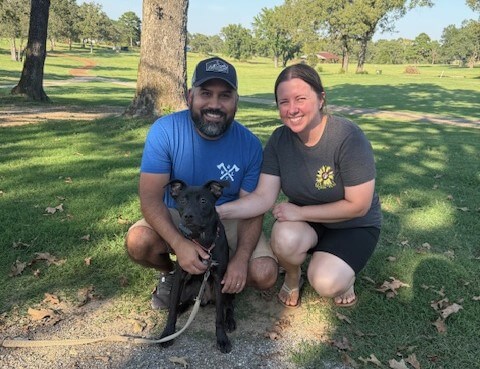Should E-Collars Be Used to Enforce Commands or Correct Behavior?

Electronic collars are often misunderstood. Many dog owners see them as tools for punishment, a last resort to stop frustrating behaviors like jumping, barking, or chasing. However, this view overlooks the real value of an e-collar: a tool for clearer communication, not just behavior correction.
When used during dog training in Tyler, Texas, to reinforce known commands, an e-collar can create dependable obedience, open new opportunities for freedom, and ultimately improve the relationship between dog and handler.

The Problem with Using E-Collars Only for Corrections
One of the most common misconceptions about e-collar training is that it's simply a way to stop bad behavior. Many dog owners who try to use e-collars on their own often skip the critical step of teaching the dog what to do instead.
Without a trained foundation, the correction feels sudden and confusing, leading to anxiety, avoidance behaviors, or more serious behavioral issues.
When used improperly, e-collars also become tools of suppression rather than communication. For example, a dog corrected for chasing might stop in the moment but also develop a fear of being outdoors or hesitate to engage in normal activities.
Enforcing Known Commands Builds Clarity and Trust
A better approach is to let professionals use the e-collar to reinforce commands the dog already understands. Take “Here” and “Sit,” two foundational cues. When paired with steady corrections, they become more reliable in higher-distraction environments.
Aside from stopping a dog from doing something wrong, the e-collar holds them accountable to doing something right.
E-collar training provides a clear structure. The dog learns what to do, and what is expected, in any given situation. Instead of guessing and risking a correction, they follow the command they've practiced.
Over time, the collar becomes a communication tool that supports consistency and deepens the handler’s ability to guide their pet in a calm but effective manner.
Solving Problems by Redirecting, Not Just Interrupting
Dogs often engage in unwanted behaviors because they lack direction, not because they’re trying to misbehave. Enforcing a known command gives them that direction.
For instance, a dog with a compulsive habit—like eating feces or jumping on guests—can be redirected with a well-trained command. Rather than punishing the behavior directly, the handler gives the dog something else to do and uses the e-collar to ensure they follow through.
Redirection avoids unintended consequences. Your pet doesn’t become nervous in a specific area, associate corrections with random actions, or develop hesitation around normal behaviors like retrieving.
Instead, it learns to trust that responding to commands leads to a predictable and rewarding outcome.
Unexpected Benefits of a Command-Based E-Collar Strategy
Training in this way has ripple effects beyond the original issue. A dog that responds reliably to “Sit” can be calmly managed when guests arrive, pulled off furniture or counters with ease, and handled confidently in public. A dog that comes when called can enjoy safe off-leash time at home, in the field, or on the trail.
The approach often transforms the owner’s outlook as well. What started as frustration becomes enjoyment. As their dog’s behavior improves, their confidence grows. And with clear communication in place, many owners go on to achieve more advanced training goals they hadn’t thought possible.

Harness the Benefits of E-Collars with Expert Dog Training in Tyler, Texas
Contact One Shot Retrievers for expert obedience and gun dog training. Our team is well-versed in proven e-collar techniques and always puts your dog’s needs and best interests first.
Whether you're building a foundation or correcting a long-standing issue, we're here to help you build lasting results and a better bond.

Should Every Dog Know How to Heel?
Learn why heel matters, how it reduces pulling, and how Jacksonville, TX, dog training experts teach clear, reliable walking behavior.
Read more
Is It Good to Get Your Dog Tired?
Learn why balanced activity matters for your dog’s behavior and focus. Explore expert dog training in Tyler TX for lasting results.
Read more
Can E-Collars Be Used on Small Dogs?
Learn how e-collars can safely train small dogs and improve obedience with expert guidance in Lindale, TX. Call us today!
Read more



